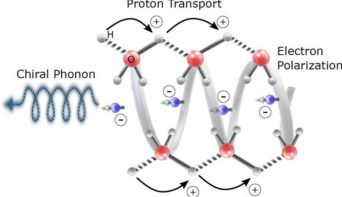Physicists have shown for the first time that electrical signals in the human brain are amplified by noise. This effect is called ‘stochastic resonance’ and is well known in a wide range of systems, including living organisms. But the discovery by Toshio Mori and Shoichi Kai of the University of Kyushu in Japan is the first observation of stochastic resonance in the information processing part of the human central nervous system (T Mori and S Kai 2002 Phys. Rev. Lett. 88 218101).

In many complex systems, weak periodic signals can be strengthened by noise. This happens when random peaks in the noisy signal coincide with regular peaks in the periodic signal. This stochastic – meaning ‘random’ – resonance is most effective when the noisy signal has a certain amplitude relative to the periodic signal. Scientists have already found evidence for the effect in humans, in the control of blood pressure in the brain and in the sense of touch.
In their study, Mori and Kai shone light signals into the eyes of five students while measuring their brain waves. Brain waves are electrical signals with frequencies ranging from 0.5 to 60 Hz that can be detected via electrodes attached to the scalp. So-called alpha waves have frequencies between 8 and 13 Hz, and are emitted when the brain is at rest.
The researchers shone periodic signals onto the right eyelids and noisy signals onto the left eyelids of the students as they rested, and measured the intensity of their alpha brain waves. As expected they found a sharp peak at 5 Hz, the frequency of the periodic signal. But when they increased the strength of the noise signal relative to the periodic signal, a ‘harmonic’ peak emerged in the alpha waves at 10 Hz. As the noise signal became stronger, this peak first intensified and then diminished.
Mori and Kai believe that the harmonic peak is good evidence for stochastic resonance in the visual cortex of the brain because it reaches a maximum at a particular signal-to-noise ratio. They are also confident that the effect took place in the brain – rather than in the eyes – because they placed a light-proof screen between each student’s eyes so that the signals did not interfere outside the head.
There are many natural sources of electrical noise in the brain, including electrochemical reactions and random firing of neurons, which could lead to stochastic resonance. Following their discovery, Mori and Kai speculate that the effect could play a role in complex brain functions such as perception and cognition.



